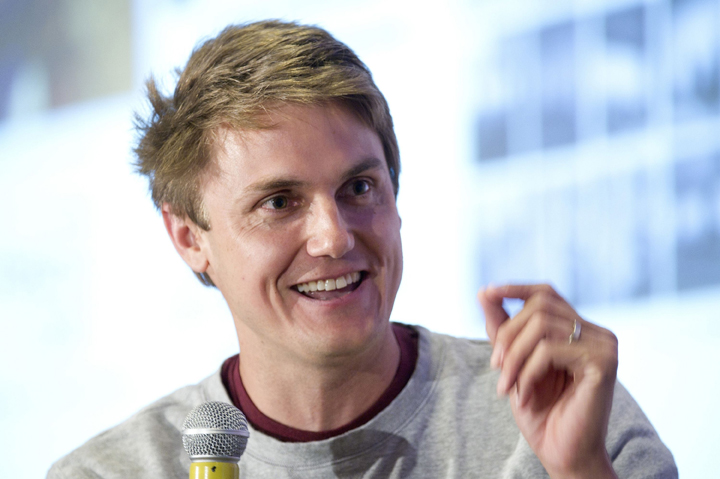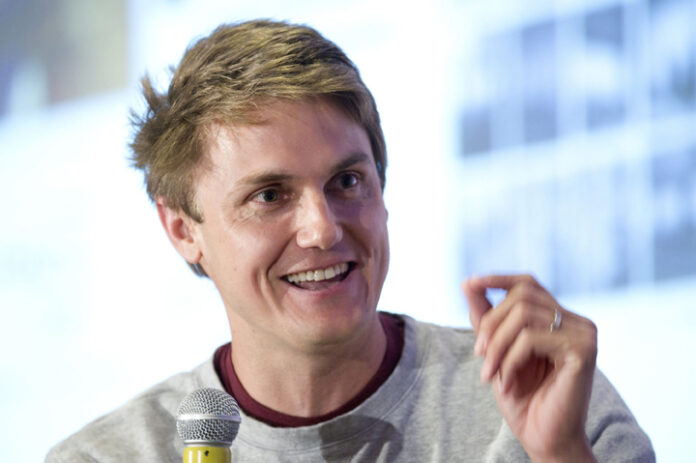Nearly a decade ago, South by Southwest was known as a launchpad for internet phenomena: The annual tech and arts festival was where Twitter Inc. broke out and where masses of 20-somethings made group messaging apps a thing.
In the spring of 2012, the king of the conference was Highlight. Paul Davison, then 32, had released the app six weeks earlier with a proposition that was scary yet intriguing. It tracked users’ whereabouts to show them profiles of people nearby with similar interests or shared connections. For that week in Austin, Texas, everyone wanted to try it. Phones buzzed and buzzed and buzzed with Highlight notifications. Venture capitalists wrote checks for millions of dollars. But within a year, the app was deemed too invasive to go mainstream and had essentially flatlined.

Nine years later, few people have even heard the name Highlight. A lot of people, however, have heard of Clubhouse, which Davison co-founded last year. Clubhouse is in many ways the opposite of Highlight, and even subsumes the role played by South by Southwest. Clubhouse is a virtual conference hall with different rooms for people to talk about whatever topics they like and invite guests to listen. It only uses audio.
South by Southwest, the venue that launched Davison’s star in the tech industry, kicks off Tuesday, not in Texas but on hundreds of thousands of screens. Meanwhile, Clubhouse rages on as a sort of virtual South by Southwest that never ends.
‘True king’
Unlike Highlight, Clubhouse has outlasted the initial burst of excitement. In the past year, the startup raised funds at a $1 billion valuation, signed up more than 10 million users, spread to dozens of countries and hosted talks with some of the biggest celebrities in Hollywood and Silicon Valley. Venture capitalists, it seems, are ready to anoint Davison as a true king.
The app closely follows Davison’s style and interests. Over the past 15 years in the Valley, the Clubhouse chief executive officer has explored the depths of how technology can be used to connect people in new ways. He’s frequently embarking on the next project and proselytizes a seemingly genuine belief that most people are good-hearted and well-intentioned, according to those who have worked with Davison.
At times, the results have made people uncomfortable or demonstrate a failure to consider safeguards against potential abuses. Clubhouse has been used to spread misinformation about Covid-19, racism and misogyny. The live and ephemeral nature of the app make policing such content difficult.
A Clubhouse spokeswoman declined to make Davison available for an interview. She said racism, hate speech, abuse and false information are prohibited on the app and that moderation has always been a top priority. In a sign that Davison may be learning from past privacy controversies, Clubhouse backtracked last week from demanding access to a user’s full contact list in order to invite friends.
Smooth and unsurprising path to the Valley
After earning his MBA from Stanford in 2007 that was followed by a stint with a startup, Davison went to work as an entrepreneur-in-residence. He emerged with a new idea: using a smartphone’s location to connect people in proximity to one another.
Davison established a company called Math Camp, a reference to a two-week crash course offered to Stanford business students before real classes began. Math Camp’s first product was Highlight. To promote it, the company paid young people to wander around downtown Austin during the conference in 2012 wearing white turtlenecks with the Highlight logo on the front. The workers showed South by Southwest attendees how the app could alert them to the presence of, say, a woman nearby who shares a mutual acquaintance and an interest in opera.
After a white-hot week in Austin, however, interest in Highlight cooled. It was unclear what the app should be used for. Dating? Networking? Connecting with friends? Many people never got comfortable with the privacy implications, and those who did got annoyed by how the GPS-intensive app drained their batteries. As people drifted away, Math Camp spent the next couple of years trying to see what else might catch on.
But Davison recognized Math Camp was losing momentum, and came to a deal with Pinterest Inc. He soon became frustrated with how life inside a bigger company moved slower than his regular, frenetic pace.
The last try
Davison left Pinterest after about two years and in 2019 reconnected with an old acquaintance named Rohan Seth. At the time, Seth was looking for help raising money for a research effort to treat his young daughter’s rare disease. The two decided to give social media startups “one last try,” they wrote in a company blog post.
They introduced Talkshow, which eventually morphed into Clubhouse. Clubhouse quickly generated buzz among Valley insiders selected to try the service, including some top venture capitalists.
“I look at a lot of social products,” said Ryan Hoover, a founder of the app directory Product Hunt and an early investor in Clubhouse. “Very few capture this magic, this feeling of, ‘This is fresh, this is new, this is exciting.’”
Like Highlight, Clubhouse doesn’t give people a clear reason to use it, and that has actually turned out to be an asset. In the absence of any prescriptions, Clubhouse can be a place to hear Elon Musk talk about Bitcoin, get an audio news briefing, listen to musicians sing lullabies or learn how to game the stock market. In one recurring room, people just make whale moaning sounds together.
Clubhouse turns a year old on Wednesday. Davison has said he wants to expand the room capacity—usually capped at around 5,000 listeners—to an infinite size, so they can accommodate musicals, news conferences, sports post-game analyses, political rallies and big company all-hands meetings. And while he’s excited about those, Davison is even more jazzed about what he can’t envision yet.
“The ways people use Clubhouse are just mind-blowing to me,” Davison told a virtual roomful of listeners, his voice quickening. “If you think about how video evolved, we sort of went from this world where you had broadcast television, and we had four channels, and everyone watched the same thing at seven o’clock on a Thursday, to cable television in the 90s, where you had 400 channels suddenly, and that led to 24-hour news channels and golf channels and fishing channels and home shopping networks.
“And then we got YouTube, which was crazy,” Davison continued. “And suddenly you got unboxing videos and ASMR and top-10 videos and crazy things that no one ever would have expected. Because people are amazing, right?”
Image credits: Bloomberg
Read full article on BusinessMirror

